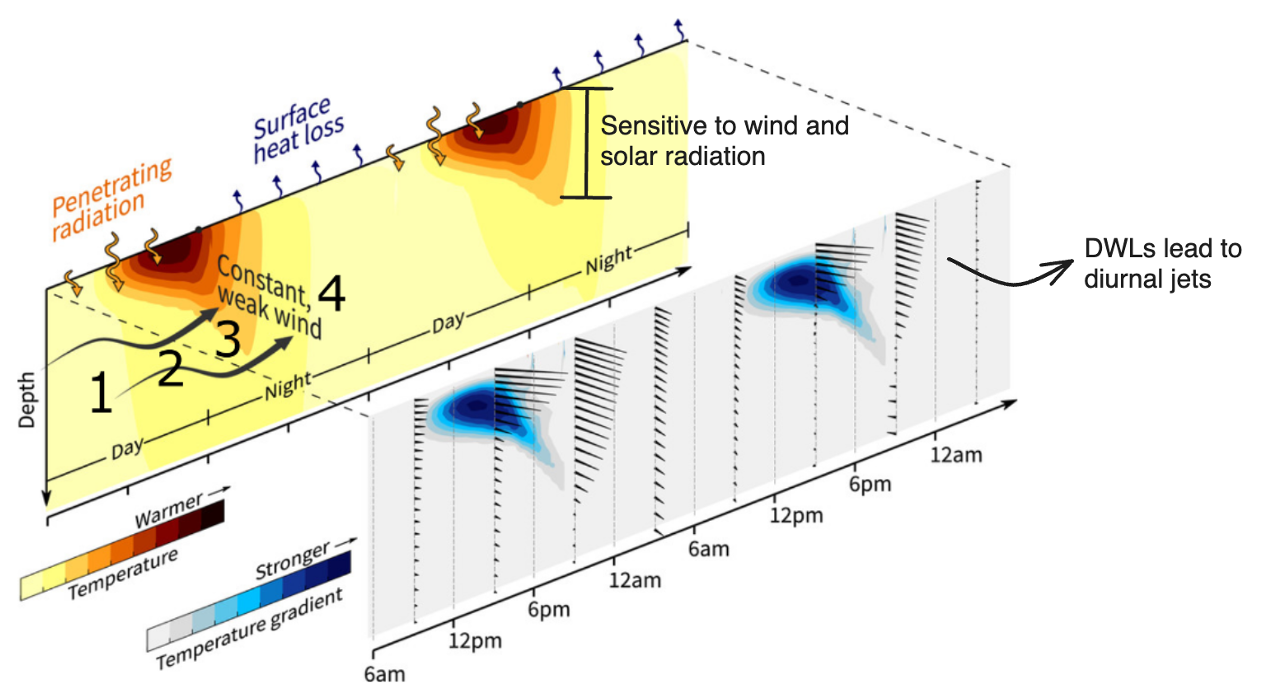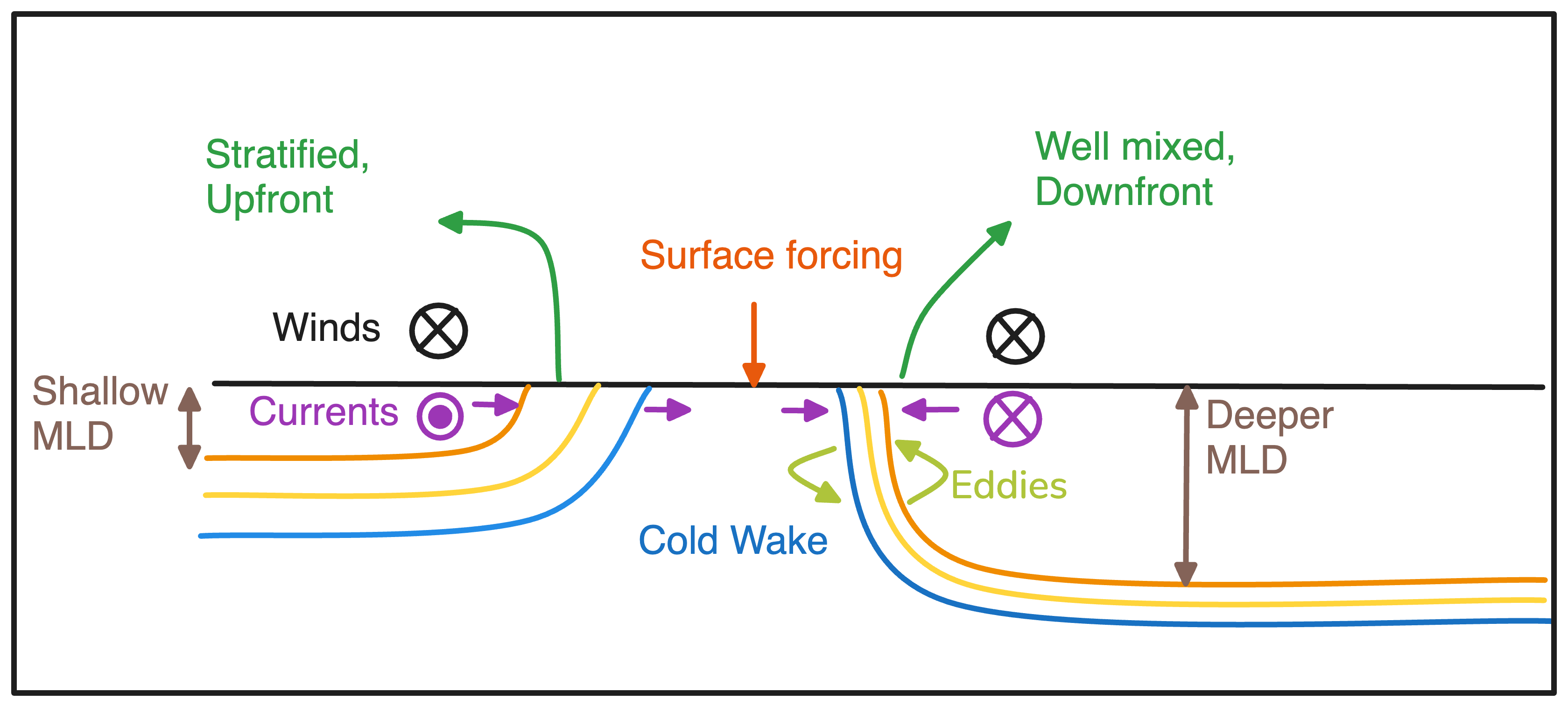Research
Impacts of waves on air-sea momentum and heat fluxes
Momentum and heat fluxes, which are computed using COARE algorithms, are influenced by waves. This contribution is parameterized in this algorithm using wave roughness: one formula uses wind speeds while the other uses wave age and wave slopes as inputs. These formulations assumes a wind age of 1.2 (which means wind-driven short waves) and assumes wind-wave alignment. However, this assumption is often not true in presence of long waves (or swells) and during misalignment of waves and winds. In collaboration led by Dr. Hyodae Seo, we are investigating these assumptions using in-situ observations from EKAMSAT field campaign and atmosphere, ocean and wave coupled models following the approach from Sauvage et al. 2023. This work began as a collaborative project during my PhD and has since evolved into a postdoctoral appointment at UH with Hyodae, through EKAMSAT project funded by US Office of Naval Research. We are examining these cases across a range of meteorological regimes, including springtime heating, hurricanes, and the winter monsoon.
Impacts of salinity stratification in driving lateral gradients in Diurnal Warm Layers (DWLs)

Diurnal Warm Layers (DWLs) play a crucial role in atmosphere-ocean interactions, particularly under low wind speeds and high solar radiation. While their formation mechanisms are well-documented, their spatial variability in freshwater-influenced regions like the Bay of Bengal remains understudied. The first chapter of my PhD thesis addresses this by using two drifting meteorological buoys with profiling instruments during the MISO-BoB field campaign to observe lateral gradients in DWL evolution across approximately 30 km. Over three days, observations revealed notable differences in subsurface heat content and DWL development, driven by wind speeds, stratification, and mesoscale processes. A 28% disparity in upper-ocean heat content and subsurface turbulent heat flux differences of 200 W/m² were observed, primarily influenced by enhanced stratification from a cold pool event and mesoscale advection, also resulting in the modification in TKE budget. These findings underscore the need to better represent DWL variability in models, especially in regions with strong salinity gradients. In the next chapter, 1-D GOTM simulations explore how salinity stratification and mixed layer depth affect diurnal SST cycles and long-term changes. While salinity stratification has a weaker influence on diurnal SST variability compared to winds or cloudiness, it can create lateral SST gradients over intra-seasonal timescales, potentially enhancing or compensating for horizontal density differences. This work was done as a part of MISO-BoB and EKAMSAT projects funded by US Office of Naval Research. The work on diurnal timescales was recently accepted in Journal of Physical Oceanography.
Role of submesoscale processes due to interactions between Monsoon winds and cyclone wake in accelerating the wake recovery

Cold wakes generated by tropical cyclones enhance ocean productivity and influence local air-sea interactions, impacting the paths and intensities of future storms, though in-situ observations of their recovery are rare. During our 2023 EKAMSAT fieldwork, we surveyed a cold wake in the Arabian Sea, formed after Cyclone Biparjoy, using shipboard instruments about 10 days post-storm. The wake showed asymmetry, with a stronger buoyancy gradient on its eastern edge and a weaker one on the western edge, leading to differential vertical structures in temperature, salinity, and velocity. While cold wake recovery is often attributed to one-dimensional diurnal heating and cooling, our observations highlight the key role of three-dimensional submesoscale dynamics, driven by monsoon winds and submesoscale fronts. These interactions accelerated the wake’s recovery to pre-cyclone conditions in just 8 days—far faster than predicted by one-dimensional models—underscoring the importance of submesoscale processes in shaping wake evolution and future atmospheric conditions. This work was done as a part of EKAMSAT project funded by US Office of Naval Research. This work was recently published in Geophysical Research Letters.
